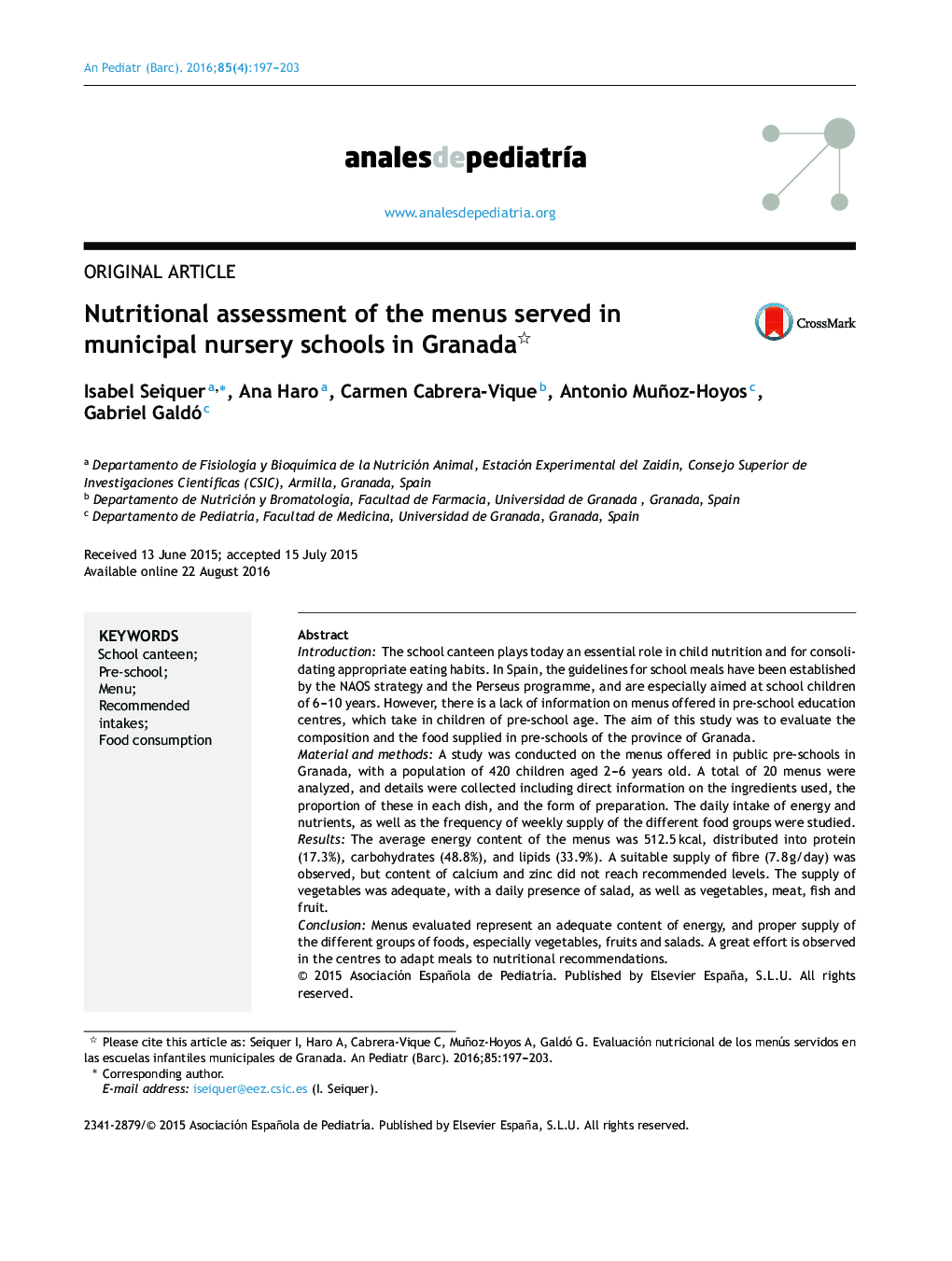| کد مقاله | کد نشریه | سال انتشار | مقاله انگلیسی | نسخه تمام متن |
|---|---|---|---|---|
| 4144923 | 1606770 | 2016 | 7 صفحه PDF | دانلود رایگان |
IntroductionThe school canteen plays today an essential role in child nutrition and for consolidating appropriate eating habits. In Spain, the guidelines for school meals have been established by the NAOS strategy and the Perseus programme, and are especially aimed at school children of 6–10 years. However, there is a lack of information on menus offered in pre-school education centres, which take in children of pre-school age. The aim of this study was to evaluate the composition and the food supplied in pre-schools of the province of Granada.Material and methodsA study was conducted on the menus offered in public pre-schools in Granada, with a population of 420 children aged 2–6 years old. A total of 20 menus were analyzed, and details were collected including direct information on the ingredients used, the proportion of these in each dish, and the form of preparation. The daily intake of energy and nutrients, as well as the frequency of weekly supply of the different food groups were studied.ResultsThe average energy content of the menus was 512.5 kcal, distributed into protein (17.3%), carbohydrates (48.8%), and lipids (33.9%). A suitable supply of fibre (7.8 g/day) was observed, but content of calcium and zinc did not reach recommended levels. The supply of vegetables was adequate, with a daily presence of salad, as well as vegetables, meat, fish and fruit.ConclusionMenus evaluated represent an adequate content of energy, and proper supply of the different groups of foods, especially vegetables, fruits and salads. A great effort is observed in the centres to adapt meals to nutritional recommendations.
ResumenIntroducciónEl comedor escolar realiza hoy día un papel esencial en la nutrición infantil y en la consolidación de los hábitos alimentarios. En España, existen directrices para los menús escolares dirigidas especialmente a niños de 6-10 años, pero hay una falta de información sobre los centros de educación infantil, que acogen a niños en edad preescolar. El objetivo de este trabajo fue evaluar la composición y la oferta alimentaria en centros de educación infantil de la provincia de Granada.Material y métodosSe realizó un estudio de los menús ofertados en escuelas municipales de Granada, con una población de 420 comensales de 2-6 años de edad. Se analizaron 20 menús, recogiendo información sobre ingredientes utilizados, proporción de los mismos en cada plato y forma de preparación. Se estudiaron el aporte de energía y nutrientes, y la frecuencia de la oferta semanal de los distintos grupos de alimentos.ResultadosEl contenido energético medio de los menús fue de 512,5 kcal, distribuido en proteínas (17,3%), hidratos de carbono (48,8%) y lípidos (33,9%). Se observó un aporte de fibra adecuado (7,8 g/día), pero escaso de calcio y cinc. La oferta de verduras y hortalizas fue adecuada, con una presencia diaria de ensalada, así como la de legumbres, carnes, pescados y frutas.ConclusiónLos menús evaluados suponen un aporte energético adecuado, y una oferta correcta de los diferentes grupos de alimentos, especialmente verduras, frutas y ensaladas. Se aprecia un gran esfuerzo de los centros para adecuar las comidas a las recomendaciones nutricionales.
Journal: Anales de Pediatría (English Edition) - Volume 85, Issue 4, October 2016, Pages 197–203
